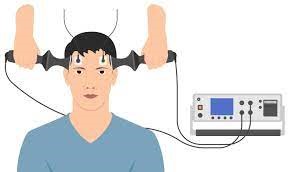A nurse on a medical-surgical unit is assessing a client who has had a stroke. For which of the following findings should the nurse initiate a referral for occupational therapy?
Difficulty performing ADLs
Inability to swallow clear liquids
Elevated blood glucose levels
Unsteady gait when ambulating
The Correct Answer is A
A. Correct. Difficulty performing ADLs such as dressing, grooming, bathing, or feeding may indicate that the client has impaired motor function, sensory perception, or cognitive ability due to the stroke, which can affect their independence and quality of life. Occupational therapy can help the client regain or adapt their skills and abilities for daily living.
B. Incorrect. Inability to swallow clear liquids may indicate that the client has dysphagia or impaired swallowing function due to the stroke, which can increase their risk of aspiration and malnutrition. Speech therapy can help the client improve their swallowing function and provide recommendations for safe oral intake.
C. Incorrect. Elevated blood glucose levels may indicate that the client has diabetes mellitus or impaired glucose metabolism due to the stroke, which can affect their healing and recovery process and increase their risk of complications such as infection or hyperglycemia/hypoglycemia episodes. Diabetes education and management can help the client control their blood glucose levels and prevent adverse outcomes.
D. Incorrect. Unsteady gait when ambulating may indicate that the client has impaired balance, coordination, or muscle strength due to the stroke, which can affect their mobility and safety and increase their risk of falls or injuries. Physical therapy can help the client improve their gait and mobility and provide assistive devices if needed.
Nursing Test Bank
Naxlex Comprehensive Predictor Exams
Related Questions
Correct Answer is B
Explanation
A. "Perhaps you think the ECT is dangerous, but I've seen it have good results." This response is dismissive of the client's concerns and implies that the nurse knows better than the client.
B. "You have the right to change your mind about this procedure at any time." This response respects the client's autonomy and informs them of their rights.
C. "Everyone gets a little nervous about this procedure as the time for it approaches." This response minimizes the client's feelings and assumes that they are experiencing normal anxiety.
D. "Your doctor wouldn't have suggested ECT if they didn't think it would help you." This response shifts the responsibility to the doctor and does not address the client's fears.

Correct Answer is D
Explanation
A. Instructing the client about the importance of regular medical appointments is important but not the priority because it is a secondary prevention strategy that aims to detect and treat any complications or changes in the client's condition early. The client should have regular follow-up visits with an endocrinologist, a diabetes educator, an ophthalmologist, a podiatrist, a dentist, and other health care providers as needed.
B. Encouraging the client to participate in daily exercise is important but not the priority because it is a tertiary prevention strategy that aims to reduce disability and improve quality of life for clients with chronic conditions. Exercise can help lower blood glucose levels, improve insulin sensitivity, reduce cardiovascular risk factors, enhance mood, and promote weight management for clients with type 1 diabetes mellitus. The client should consult with their health care provider before starting an exercise program and follow safety guidelines such as checking blood glucose levels before and after exercise, wearing appropriate footwear and clothing, carrying a source of fast-acting carbohydrate, and staying hydrated.
C. Explaining proper foot care techniques to the client is important but not the priority because it is a tertiary prevention strategy that aims to prevent or minimize complications such as foot ulcers, infections, and amputations for clients with type 1 diabetes mellitus. Foot care includes inspecting feet daily for any injuries or abnormalities, washing feet with mild soap and warm water, drying feet thoroughly especially between toes, applying moisturizer to prevent dryness and cracking, trimming toenails straight across and filing edges smooth, wearing clean cotton socks and well-fitting shoes, avoiding walking barefoot or exposing feet to extreme temperatures or pressure, and seeking medical attention for any foot problems.
D. Ensuring that the client understands the medication regimen is the nurse's priority because type 1 diabetes mellitus requires lifelong insulin therapy to maintain blood glucose levels within normal range and prevent complications such as ketoacidosis, hypoglycemia, and organ damage. The client needs to know how to administer insulin injections, monitor blood glucose levels, adjust insulin doses according to carbohydrate intake and physical activity, recognize and treat signs and symptoms of hypo- and hyperglycemia, and store insulin properly.
Whether you are a student looking to ace your exams or a practicing nurse seeking to enhance your expertise , our nursing education contents will empower you with the confidence and competence to make a difference in the lives of patients and become a respected leader in the healthcare field.
Visit Naxlex, invest in your future and unlock endless possibilities with our unparalleled nursing education contents today
Report Wrong Answer on the Current Question
Do you disagree with the answer? If yes, what is your expected answer? Explain.
Kindly be descriptive with the issue you are facing.
